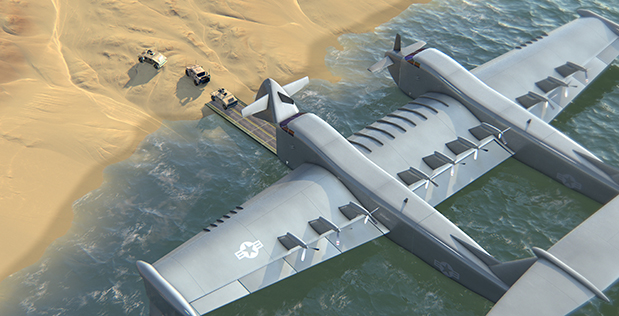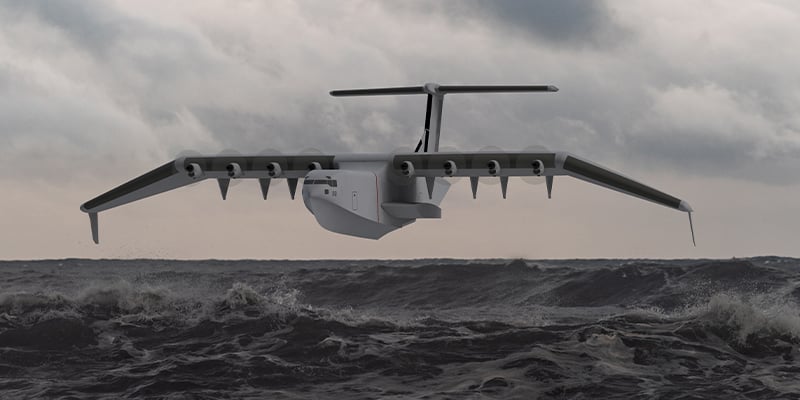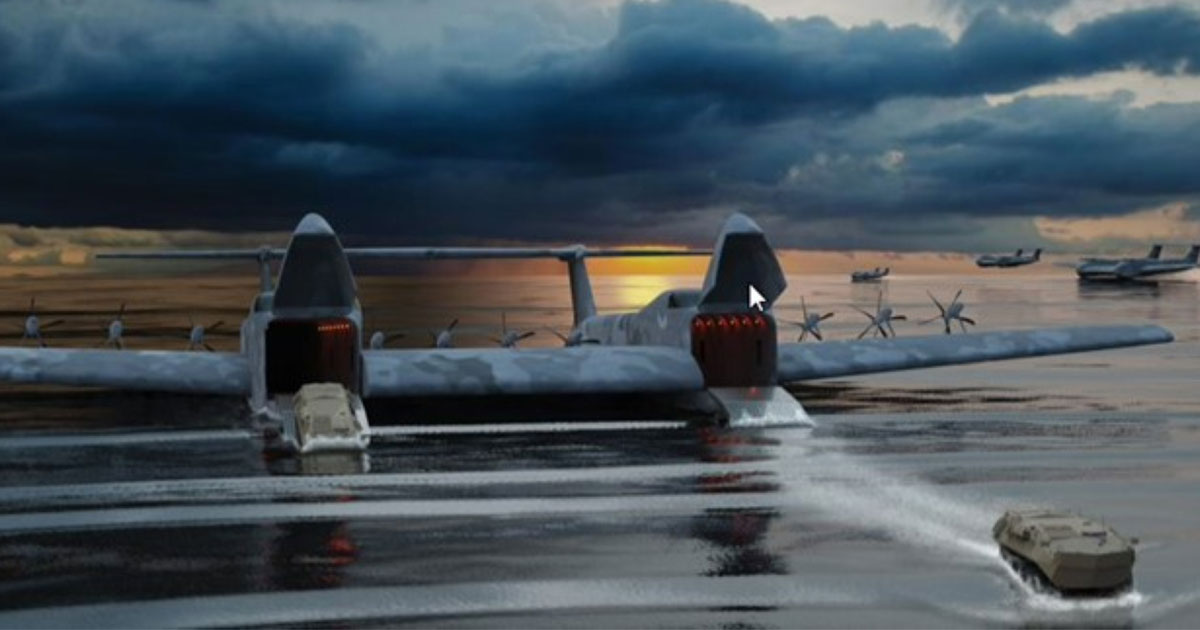
This post has been updated with additional contract information.
The Pentagon’s emerging technologies research arm awarded two aviation companies contracts to develop seaplanes that would fly less than 100 feet off the ground and carry 90 tons of cargo more than 6,500 nautical miles, the Department of Defense announced Wednesday.
General Atomics, working with Maritime Applied Physics Corporation, and Aurora Flight Sciences, working with Gibbs & Cox and ReconCraft, each won contracts to start design and development work for a prototype Liberty Lifter cargo aircraft, according to the DARPA announcement.
“The planned Liberty Lifter demonstrator will be a large flying boat similar in size and capacity to the C-17 Globemaster III transport aircraft. Goals include takeoff and land in Sea State 4, sustained on-water operation up to Sea State 5, and extended flight close to the water in ground effect with the capability to fly out of ground effect at altitudes up to 10,000 feet above sea level,” reads a statement from DARPA.

“Liberty Lifter will use low-cost manufacturing akin to ship fabrication in building a highly innovative seaplane capable of meeting DoD heavy lift requirements [100+ tons] that operates with runway and port independence.”
General Atomics was awarded $8 million cost-plus-fixed-fee contract award in support of DARPA’s Liberty Lifter program in November for the work, the company announced Wednesday. The contract could include options brining the value to $29 million. Aurora’s contract, which DARPA awarded Jan. 27, was for $5.7 million and could grow to more than $25 million if all options are exercised. Aurora, a Boeing subsidiary, was awarded $5.7 million on Jan. 27, with options that could grow the contract to $27 million.
In the first phase of the contract, the two teams will develop an aircraft that will carry two Marine Corps Amphibious Combat Vehicles or six 20-foot-long cargo containers at just above the wave tops using the physics of the ground effect. Fixed-wing aircraft flying close to the behave like they’re riding on a cushion of air between the ground. Airplanes experiencing ground effect use less energy to move through the air at high speeds and in turn take less energy to fly.
Both companies have taken different approaches to their designs.
“The General Atomics team has selected a twin-hull, mid-wing design to optimize on-water stability and seakeeping. It employs distributed propulsion using twelve turboshaft engines,” reads the DARPA release.
“Aurora Flight Sciences point-of-departure design more closely resembles a traditional flying boat, with a single hull, high wing and eight turboprops for primary propulsion.”
Now, the two teams will set out on an 18-month period to refine the operational concepts and design for each proposed Liberty Lifter.

“Phase 1 will transition into Phase 2 in mid-2024 with continued detailed design, manufacturing, and demonstration of a full-scale Liberty Lifter X-Plane. DARPA anticipates teaming with one or more DoD Service and international partners for those activities and further development of the Liberty Lifter concept into an operational vehicle,” DARPA’s statement reads.
DARPA’s effort isn’t the first time a government has tried to create a ground effect vehicle for military applications.
The Soviet Union experimented with ground effect vehicles with its ekranoplan program – high-speed cargo aircraft for the Baltic and Black Sea fleets, but the platforms were largely sidelined in the 1980s.
Perhaps the most famous ground-effect craft was the massive 400,000-pound Hughes H-4 Hercules cargo plane that flew 70 feet above the ground for about a mile in 1947. The so-called Spruce Goose was developed in conjunction with the Pentagon for a similar mission as the Liberty Lifter – transporting cargo across vast distances faster and at less risk from attack than a ship.





